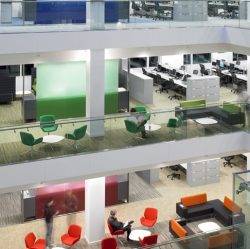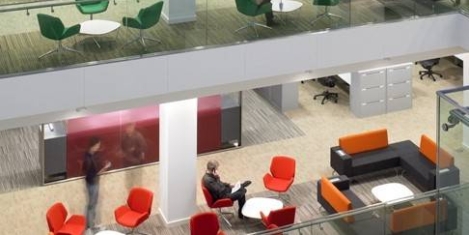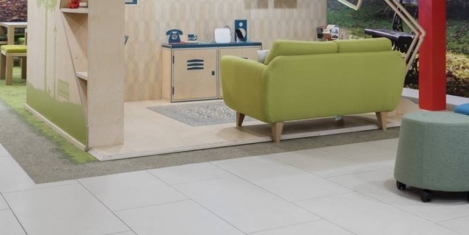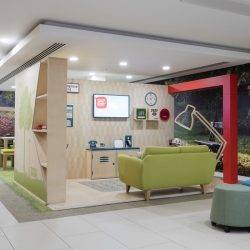June 26, 2017
CoreNet Global to explore ‘Transcending Boundaries’ at EMEA Summit 0
 The CoreNet Global EMEA Summit will return to London in September 2017 for the fifth time, bringing together leading figures from the corporate real estate (CRE) profession to discuss how CRE can add value and be a true strategic advisor in today’s dynamic, rapidly changing environment. Under the theme Blurring the Lines: Transcending Boundaries, the summit will explore a range of shifts that demand transformational thinking and integrated solutions. In a world of continual and disruptive change, the summit will assist in identifying how CRE professionals can transcend traditional boundaries to uncover new opportunities. The three-day event will provide a wide variety of engaging and educational sessions, including keynote presentations from some of the profession’s most innovative thinkers, interactive seminars where attendees will be able to test new technologies and learn from one another’s experiences, networking sessions and dedicated teaching workshops.
The CoreNet Global EMEA Summit will return to London in September 2017 for the fifth time, bringing together leading figures from the corporate real estate (CRE) profession to discuss how CRE can add value and be a true strategic advisor in today’s dynamic, rapidly changing environment. Under the theme Blurring the Lines: Transcending Boundaries, the summit will explore a range of shifts that demand transformational thinking and integrated solutions. In a world of continual and disruptive change, the summit will assist in identifying how CRE professionals can transcend traditional boundaries to uncover new opportunities. The three-day event will provide a wide variety of engaging and educational sessions, including keynote presentations from some of the profession’s most innovative thinkers, interactive seminars where attendees will be able to test new technologies and learn from one another’s experiences, networking sessions and dedicated teaching workshops.

















 A major research study into Health and Wellbeing in offices has been launched by the British Council for Offices (BCO). “Wellness Matters: Health and Wellbeing in offices and what to do about it” is a year-long project which aims to provide definitive guidance on how to enable office Health and Wellbeing across a building’s lifecycle. The major research study has been commissioned to critique existing Health and Wellbeing measurement and certification, identify the most recent and relevant medical evidence justifying a proactive approach to Health and Wellbeing in the built environment, and give guidance on the business case for investment in this space beyond simply improving productivity. Most significantly, this research aims to deliver a practical guide to creating a healthy environment across the different stages of a building’s life cycle, from design, construction and leasing to the most important aspect by time and value: occupation and asset management.
A major research study into Health and Wellbeing in offices has been launched by the British Council for Offices (BCO). “Wellness Matters: Health and Wellbeing in offices and what to do about it” is a year-long project which aims to provide definitive guidance on how to enable office Health and Wellbeing across a building’s lifecycle. The major research study has been commissioned to critique existing Health and Wellbeing measurement and certification, identify the most recent and relevant medical evidence justifying a proactive approach to Health and Wellbeing in the built environment, and give guidance on the business case for investment in this space beyond simply improving productivity. Most significantly, this research aims to deliver a practical guide to creating a healthy environment across the different stages of a building’s life cycle, from design, construction and leasing to the most important aspect by time and value: occupation and asset management.


 London’s office workers are looking for shorter commutes, demanding more collaborative and networking opportunities while at work and better access to green space, retail, leisure and wellness; all of which could present a huge opportunity for the less congested outer London boroughs, a new report suggests. According to Savills latest London Mixed Use Development Spotlight, as employers and employees alike demand more from their workplace and their work- life balance, London’s outer boroughs could reap the benefits by providing greater flexible office space and affordable homes at a variety of price points. According to Oxford Economics, employment in sectors that tend to occupy co-working spaces is set to rise by 20,000 people in the outer London boroughs over the next five years, which equates to a gross additional need of 1.6 million sq ft (148,644 sq m) of office space.
London’s office workers are looking for shorter commutes, demanding more collaborative and networking opportunities while at work and better access to green space, retail, leisure and wellness; all of which could present a huge opportunity for the less congested outer London boroughs, a new report suggests. According to Savills latest London Mixed Use Development Spotlight, as employers and employees alike demand more from their workplace and their work- life balance, London’s outer boroughs could reap the benefits by providing greater flexible office space and affordable homes at a variety of price points. According to Oxford Economics, employment in sectors that tend to occupy co-working spaces is set to rise by 20,000 people in the outer London boroughs over the next five years, which equates to a gross additional need of 1.6 million sq ft (148,644 sq m) of office space.










June 29, 2017
The onus is on employers to create working conditions that attract people 0
by Graham White • Comment, Facilities management, Wellbeing
(more…)